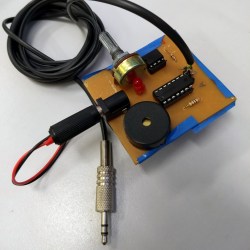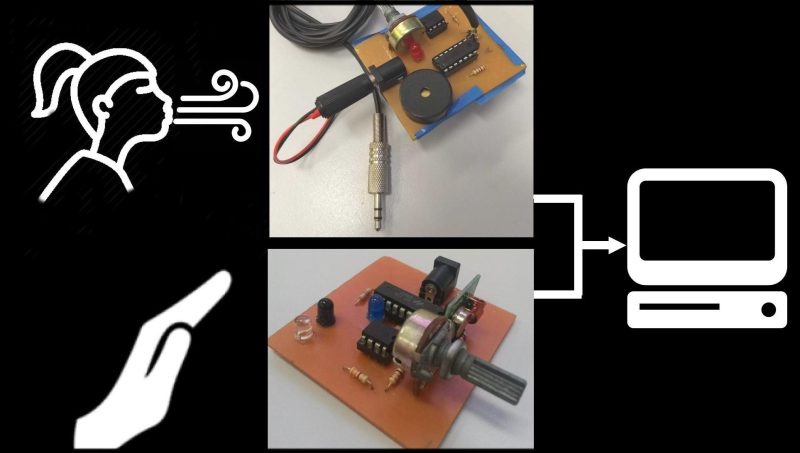An outstanding number of things most people take for granted present enormous hurdles for people with physical disabilities, including interaction with computers and other digital resources. Assistive technologies such as adaptive switches allow users who cannot use conventional buttons or other input devices to interact with digital devices, and while there are commercial offerings there is still plenty of room for projects like [Cassio Batista]’s DIY Low-cost Assistive Technology Switches.

[Cassio]’s project focuses on non-contact switches, such as proximity and puff-based activations. These are economical, DIY options aimed at improving accessibility for people who are unable to physically push even specialized switches. There are existing products in this space, but cost can be a barrier and DIY options that use familiar interfaces greatly improves accessibility.
Assistive technologies that give people the tools they need to have more control over their own lives in a positive, healthy way is one of the more vibrant and positive areas of open hardware development, and it’s not always clear where the challenges lie when creating solutions. An example of this is the winner of the 2015 Hackaday Prize, the Eyedrivomatic, which allows one to interface the steering of an electric wheelchair to a gaze tracking system while permanently altering neither device; a necessity because users often do not own their hardware.



















Great project, and a nice clear project page. Good luck with this.
This comes with good timing with the recent release of the xbox adaptive controller, which can utilize such inputs from other companies by way of 3.5mm connectors.
There’s been one tiny detail I’ve been unable to find any info on, so perhaps a good opportunity to ask here.
Switches/buttons seem to use by standard the “mono” 2-pin 3.5mm connectors (aka TS), and being a button the wiring is pretty obvious.
Analog controls however appear to use by standard “stereo” 3-pin 3.5mm connectors (TRS) yet there is next to no info out there on wiring beyond claims that “yup, that’s the standard”
Anyone have any insight on this? Most commercial offerings of such controls are many hundreds if not thousands of dollars, not unlike commercial push buttons on a mono plug being many hundreds of dollars.
This seems perfectly apt for the DIY market that doesn’t need or want to use the things where “medical certification” wouldn’t even be required.
Can you provide the name and/or model of (or a link to) one of those analog controls ? We can try to find more info about them, to help you. (I would say they may have a potentiometer, voltage divider or similar inside, with two conections for power and one for the analog output, but it is just “a wild guess”).
Best regards,
A/P Daniel F. Larrosa